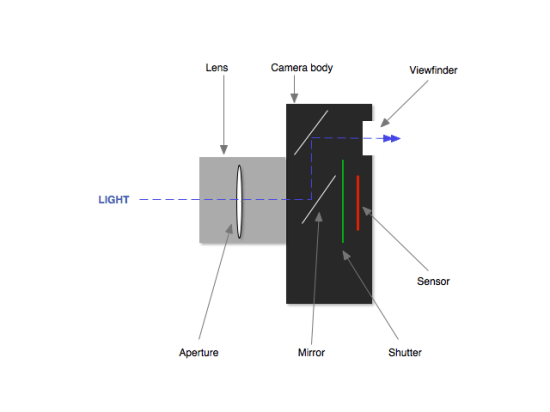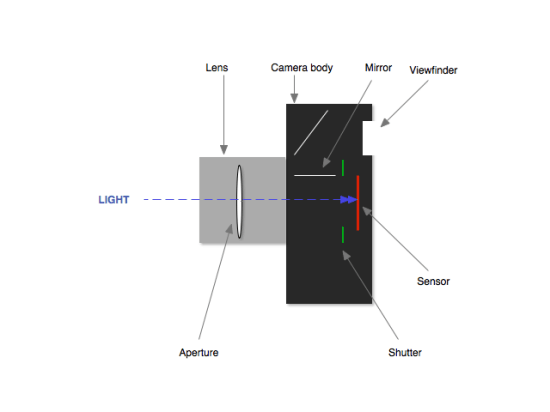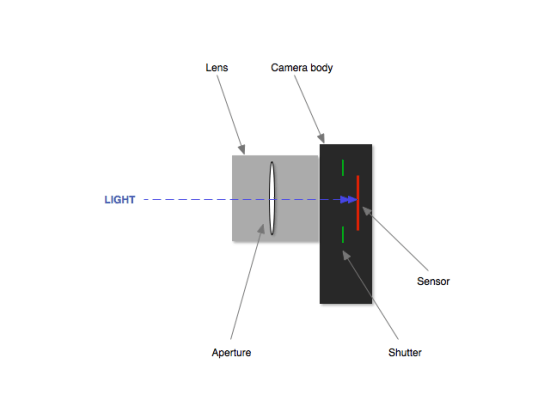Camera
Cameras are designed to capture light so you can create images.
Inside your camera is some highly sophisticated and capable technology designed to help you create those images. The technology differs between manufacturers and models, but all DSLR cameras operate in a similar way. They have a lens to focus light, and they have a sensor to capture the light and form an image.
Inside your camera’s body is a sensor on which the image is formed when it is exposed to light. This light enters through the lens. Normally the sensor is not exposed to any light because it has a shutter in front of it blocking the light. The shutter only opens when you press the shutter button on top of your camera. When the shutter opens the sensor is exposed to light and an image is formed.
When you look into your camera’s viewfinder, you are actually seeing the view through the camera’s lens. When you are not pressing the shutter, two mirrors bounce light, which enters through the lens, out through the viewfinder.
Lenses focus light onto the sensor. All lenses contain an opening called the aperture. The size of the aperture can be made large or small to let more or less light hit the sensor, more on that later.
Here is a simplified diagram of a DSLR camera in its resting state, i.e. when you are not pressing the shutter button.

When you press the shutter button on your camera, the shutter inside your camera opens, allowing light to pass through and hit the sensor. This light, focussed by the lens, forms the image.

Mirrorless and compact cameras work in a slightly different way to DSLR cameras. Their smaller size is achieved by doing away with the internal mirror mechanism. This means that instead of showing you a view through the lens when you look into the viewfinder, you see an electronic version of the scene created by the camera. Apart from this, they work in the same way as DSLR cameras.

